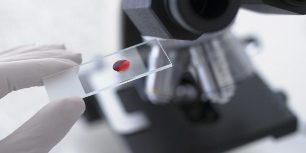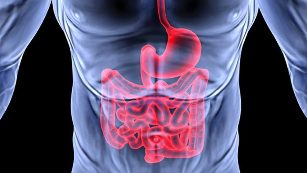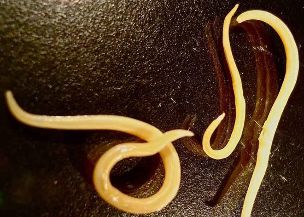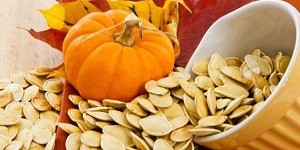Before you begin the treatment of parasites, it is important to determine exactly what type is present in the body. This is necessary to collect methods of effective treatment, as most drugs are designed specifically to get rid of a particular type of helminth. The main methods of diagnosis that allows the determination of the stimulant of the invasion:

- the analysis of the masses fecal;
- blood tests: in general and also immunofermentniy;
- the stroke of the brush;
- the analysis of the secrets of 12 of the duodenum;
- ct scan;
- The ultrasound scan.
The parasites can be detected by a blood test. With a single negative result of the majority of the analysis must be carried out again. It is necessary to obtain a report of the results. If the results of the analysis confirmed the presence of worm invasion, it is important that immediately the the to start the treatment against worms. It provides 3 consecutive phase:
- The preparation of the body – the consumption of sorbents, pumpkin oil, which activate the process of removing the accumulation of toxins. Has a duration of 5 to 7 days.
- The consumption of anthelmintic drugs may be the drop or the suspension, designed for the destruction of a certain kind of parasites:
- Of nematodes will help to drug of wide spectrum action, with action;
- The recovery phase – it helps to restore the normal functioning of the body, the work of the immune system. Provides for the use of sorbents, vitamin supplements, in some cases, are assigned to other medications.
The treatment of helminth infection should be done under the supervision of a doctor. When it comes to the infection of tape worms and flukes, it shows the therapy in the hospital. Pharmacological drugs are very toxic. After use they are strong side effects, your acceptance is expressly prohibited to pregnant women. In this sense, many prefer to get rid of the worms with the help of folk medicine. In your arsenal there are many recipes proven for centuries. Effect against the worms has a lot of herbs and plants: pumpkin, tansy, wormwood, Helichrysum, flax, onion, garlic, walnuts, pomegranates, carrots. At its base, prepare decoctions, infusions. Are designed for oral administration or enemas to clean them up. The latter are appointed to the fight against the worms, parasitic in the intestine. When you select the treatment method note that in the recipe does not contain plant elements, to which you are allergic. To minimize the risk of infection of worms, it is important to observe the preventive measures:
- wash hands before eating and another after the visit, bathroom, contact with animals;
- carefully wash and rinse with boiling water fruits, vegetables, and legumes;
- expose enough of the heat treatment of the meat, fish;
- perform deworming pets.
For the prevention of parasites and always wash your hands well. At the first signs of helminth infection, even if it seems that you can't get worms, you should go to the doctor. Designated by him for the diagnosis, the need to collect funds for the treatment against worms.
How are earthworms more simple
Sometimes you can hear the phrase that the patient is infected with the worms. It is necessary to understand that the simple is exclusively single-celled organisms, in extreme case, the organized colonies. But there is never a lot of cell, such as worms and helminths. Along with the most simple of all the processes occurring in least cell cytoplasm and cell nuclei, while that of the worms anatomical organization much more difficult: they have different organs that perform are special physiological functions. Therefore, to include the worms to the more simple in the root of the evil. Sometimes worms called protozoa parasites in comparison to insects: bed bugs, lice, etc, since the latter are much higher up on the evolutionary ladder. In that sense, the name of the worms animals.
Most common parasites
The most common form of in endoparasites are, without doubt, helminths (worms), which, according to various sources, infected more than 80% of the population of the planet. A large number of these parasites are divided into to main types:
- nematodes – nematodes (ascaride, ostritsy, Trichinella, vlasoglav etc);
- cestodes tape worms (lentetsy, pig and bull tsepen, tapeworm etc);
- trematody – worms-flukes (liver, blood, lung, as well as the trematodes that inhabit the intestine).
You can sometimes find more of a common classification, according to which all types of parasites of people are divided into:
- bowel, infect in the intestine;
- cloth, localized in other organs and tissues.

Let's look at a brief description of the most common species of helminths.
Round worms (nematodes)
- Ascaride most common of the nematodes of the length of 20 to 40 cm, parasites in the small intestine, but previously to migrate in the human body, to the surprise of the circulatory and the respiratory system. Along with the bowel of these parasites can be found in the liver and the gall bladder, the heart and the lungs. Frequent symptom living with roundworm – an allergic reaction.
- Ostritsy small worms, up to 1 cm, which affect the intestine and result in enterobiasis with the disorder work gastrointestinal, fatigue, sleep disorders, and other Hallmark symptom of the presence of pinworms – itching in the area of the anus, where they lay their eggs.
- Trichinella – these worms are microscopic in size in only a few millimeters) lead to a large disease – trihinellez, which may, in the absence of treatment lead to death. The adults inhabit the body of the people in the muscle (respiratory, facial, and other), causing muscle aches, fever, swelling, allergic skin rashes.
- Vlasoglavy – small worms (length of up to 4.5 cm, with the front part of the body in the form of a thread), the larvae are called trihozefalez with acute diarrhea, abdominal pain and other symptoms that are reminiscent of the appendicitis. As A result of the intoxication of the organism develops anemia.
Tape worms (cestodes)
- The choice of lentets, the body length of a prison term of up to 10 m, leads to the development of the difillobotrioz with nausea, weakness, vomiting, unstable chair, asthenia, and anemia.
- Swine tsepen has a length of 3 to 8 m, parasitizes mainly in the small intestine and causes two diseases: taeniasis with dyspeptic, asthenic-neurotic and abdominalnim by syndromes, and the cysticercosis with ebrietas, intestinal, allergic, and respiratory syndromes. Depending on the location of tsistitserki the involvement of the muscles, the brain, the heart, eyes and other
- Bullish tsepen, whose length can be up to 18 m, causes the beef tapeworm infection, and is considered one of the most dangerous species of worms. If you do not question what to do deworming, you can live in the human body, up to 18-20 years. It is located in the colon, causes a strong intoxication by the products of their livelihoods, as well as diarrhea, nausea, vomiting, abdominal pain, anemia, allergic reactions, and problems with the nervous system.
- Dwarfish tsepen of the total length of 1.5-5 cm from the source of the gimenolepidoz with dyspeptic, armbar and asthenic-neurotic syndromes that affect, above all, digestive, and nervous systems of the body, as well as the liver.
- Echinococcus is considered the most fine of the tape worm – its length is only 2.5 to 8, rarely 9 millimeters, however, the infection will have terrible consequences in the form of lesions in the liver and lungs, where they form cysts and tumors that cause the dysfunction of these organs.
Worms-flukes (trematody)
- Liver flukes, or the fluke of liver shape resembles a length of 30 to 50 mm and a width of 8 to 13 mm, it has a suction cup. Damages the sheath of the liver and sticking the bile ducts, is capable of coating completely the reflux of bile. Can lead to cirrhosis, jaundice and liver cancer.
- Cat (siberia), the trematodes, or fluke feline, plane of the worm length from 4 to 13 mm from the Location of the ducts of the gallbladder, the liver and the pancreas. Called opisthorchiasis with the development of gastritis, ulcers, pancreatitis, acute cholecystitis, until the cancer of the liver, which can lead to death.
- Lung flukes is ovoid in shape, red-brown body with small spines, length of 7.5 to 12 mm with a width of 4 to 8 mm Affects the lungs, causing inflammation, pleural effusion, coordinator of the fibrosis and lung cancer. Penetrate into the brain causes encephalitis and meningoencephalitis.
- Schistosoma (blood flukes) – razdelnopolie worms the size of 1-2 cm, the eggs that cause the increase in the size of the liver, spleen, and lymph nodes, the formation of polyps in the intestine, diarrhea, granulomatous inflammation, which is carried to the bladder cancer.
Protozoan parasites
Toxoplasma gondii (Toxoplazma gondii) – a type of parasites, the owner of the main are cats. You can also transfer warm-blooded animals and man. The disease, caused by Toxoplasma, is called toksoplazmozom. Course of the disease is easy, with the exception of the defeat of the fetus inside the womb of your mother the time of a pregnancy, resulting in serious consequences, both for the mother and the fetus, or even death.
Amoeba simple unicellular organism present, is considered to be one of the first beings which have ever lived on the Earth. The disease, caused by the amoeba, is called amoebiasis. An intestinal infection, with predominance of the ulcerative the defeat of the large intestine with the advent of the bloody diarrhea, the possibility of the secondary education intestinal foci, with a tendency to chronic and leakage. The malaria Plasmodium – simple one cell creature, in the cycle of development of which the person is a temporary owner, and the mosquito a permanent. In the human body, parasitic Plasmodium filed the 4 types:
- P. malarie the four-day malaria;
- P. vivax — the three-day malaria;
- P. ovale — the three days of ovale malaria;
- P. falciparum — tropical malaria;
The duration of the interval between bursts depends on the type of pathogen. In addition to all of this develops anemia, as well as the Plasmodium affects red blood cells red blood cells. The disease can occur both in light as in the severe form.
The path of penetration in the body:
- water through the dirty water;
- distance – home – with-the objects, the clothes, the dishes;
- digestive – through of dirty vegetables, the fruits, the products that have not received a heat treatment.
It sometimes happens that the carrier of parasites that are not sick, but that is only a vector and assigns pathogen in the external environment. For the development of the disease, simply parisian parisian with that penetrate the human body, only a few cyst giardia lamblia. Leishmania – the representatives of this type are the cause of leishmaniasis. The vectors are mosquitoes. The main contingent of the defeat, who are the people, rodents, mammals. For the full development pathogen an organism it is necessary the presence of two masters. This is a mosquito and a representative of the vertebrates. The human disease caused by the occurrence of an invasion by Leishmania:
- visceral leishmaniasis (fever of Doom Doom) – occurs the defeat of the internal organs;
- the leishmaniasis of the skin (baghdad ulcer) – the defeat of the skin, often the head, with the consequent formation of scars;
- the leishmaniasis of the skin and mucous membranes – is manifested heavy destructive of the defeat of the skin and mucous membranes.
- The prevention of consists of the of the in the sanitation of the foci of breeding of mosquitoes, the destruction of rodents, control of populations of dogs, the burial of the corpses of dead animals.
Trichomonas – flagellated single-celled organisms in the form of a pear, cause of the disease, trichomoniasis, are transmitted by sexual intercourse, and affect the urinary system. Remarkable suffering men and women, but in men the symptoms are generally asymptomatic. The trypanosome – rod single-celled most simple flagellates. Cause a severe disease of trypanosomiasis, a deadly to humans are the disease of the dream. Vector of the trypanosomes are bed bugs, the tsetse fly. In the body of the host parasite multiplies under the skin, then penetrates into the lymphatic system and the blood. The majority of pathogens are found in spinal and in the brain, where they destroy cells and produce their toxins.
Flat helminths
Flat worms, or flukes (trematody), have the characteristic leaf shape of the body. The structure is very organized — they have digestive, excretory, and nervous system. During the life cycle of change their masters. The distribution received the most important most important classes:
- Anthrax Fluke (fluke cat), or opistorchis. Most often, the infection occurs through the raw fish, which leads to the appearance quite dangerous, disease — opisthorchiasis. The multiplication of the parasites is very fast, which can cause serious consequences. The worms have a yellowish hue, and its length can be difficult to difficult to overcome the 12 m paying attention in the human body, these parasites cause internal bleeding, violate the bile reflux that causes the dysfunction of the pancreas. Dangerous side effects: cholangitis, purulent type, the aquilia, the cholangiocarcinoma.
- Liver Fluke. Intermediate teacher representatives are cattle, and man is infected by eating poorly treated in the meat of the affected animals. As a result of the infection develops the disease fascioliasis. By the size of these worms are relatively small (not more than 5-6 cm), but are able to cause dangerous the condition is of it is: evidence of liver abscesses, cholangitis sclerosing, hepatitis. Through the blood of the larvae of the parasite can explode throughout the body.
- Shistosoma. The worm is able to stay in the blood vessels, the consumption of the components. As a result of their vital activities, it is possible to the development of varicose veins, tumors. The main symptom is severe general intoxication.
Bullish tsepen
Bullish tsepen can reach a length of up to 12 m. It is hermaphroditic, which can manufacture more than 100 000 eggs leave with the feces. The eggs fall into the ground and then into plants, these plants are eaten by livestock. In the body of the animal the eggs hatch into larvae, which are located in the muscles. If a person eats the flesh of cow, the larvae enter the intestine. Person-to-person, the larvae are not transmitted.
The adult worms are of the crown with four suckers, the neck and the body, formed by segments. The number of segments grows, the mature segments separate from the worm and to relieve ourselves of the intestine of the person outward.
Bullish tsepen: symptoms
The symptoms of the disease are nausea, vomiting, dyspeptic disorder, increased salivation, dizziness, weakness, nervousness, fatigue, abdominal pain of uncertain localization, allergies, changes in appetite.
To check out bullish tsepen of the body, there is a schema that consists of 3 stages: preparatory (purification of the body), the anti-parasitic medicines for the recovery of the diet, phytotherapy).
Tape worm

The great worm-type conveyor, or cestodes, include a wide range of flat worms, whose length can be from 2 mm up to 10 to 12 m. the bodies of the parasites has its special structure — the number of the segments, the head and neck with suction cups (hooks) to the fastening on the walls. The cestode — hermaphroditic, and eggs are here here in segments. The nutrients in worm absorbed through the entire surface of the body.
Tapeworms
We highlight the following common types of tape worms:
- Alveolar. Their means of life affects the appearance of extremely dangerous disease of alveococcosis. The species may have a length of more than 4 m. a Feature of these worms is the education in the place of the fixing dense knots tone of a whitish color with a diameter greater than 2 cm, which resemble a malignant tumor the tumor. The most characteristic feature of the localization lungs, kidneys, and liver. They are able to lead to sclerosing cholangitis and abscess, and which extends in the spleen, the muscles and the brain.
- Tsepni, or tapeworms. There was a greater diffusion of this type, such as bovine and swine tsepen, the choice of lentets. They are distinguished by the large dimensions of more than 10 m, and the great length of the lives of more than 20 years. Bullish tsepen excites the disease, beef tapeworm infection, and is usually found in the small intestine. Serious complications of cholecystitis, intestinal obstruction, appendicitis. Swine tsepen a little less of their "peers" (length 2-3 m). It becomes the cause of taeniasis. The choice of lentets is manifested in this pathology is is, as difillobotrioz. The contagion occurs through the poorly cooked fish. This worm is able to lead to these consequences: atrophy of intestinal shell, the glossitis of paul, leukopenia.
Diseases that cause
The most dangerous parasites that live in the human body, can cause a variety of diseases. Very often, the disease, cause-specific parasite that carries the same name as him. Thus, the different types of parasites in the human body can cause the following diseases:
- certain parasites in the interior of man (flukes) cause the ditch;
- the cestodosis arise from the defeat of the tape worms;
- if the child or adult in the intestine of the nematodes, are diagnosed nematodes;
- the leeches cause hirudins;
- Fur seal cause skrebni.
However, the parasites in the body of a person may affect not an organ.

- The defeat of the eyes;
- Diseases of the gastrointestinal organs caused by single-celled parasites and worms, – the ascariasis, trihinellez, hookworm, enterobiasis;
- The disease – brain echinococcosis, toxoplasmosis;
- Dermatological disease – infection, lice, scabies;
- Pathology is pulmonary echinococcosis, ascariasis etc .. ;
- Disease of the liver – opisthorchiasis, echinococcosis;
- In the mouth, in the area of the ears and in the oral cavity, and parasites can cause different types of diseases;
- Pathology it is of the heart;
- Diseases of the genitourinary system;
- Pathology is the blood vessels.
Medications for the treatment of parasitic diseases
At present, we have developed a number of drugs for the treatment of parasitic diseases. For the treatment of helminth infection used drugs of broad-spectrum action, with action and with a limited spectrum. In addition to the data of the drugs, it is recommended that the intake of vitamins, medicines for the recovery of the ediacarense intestinal. Help the recovery of the ediacarense and fermented milk products bacterial, but not fungal of the yeast. To avoid strong allergic manifestations of the use of antihistamines and glucocorticoids. For the recovery, the process of digestion, it is sometimes convenient to take digestive enzymes, choleretic drugs. In the treatment of worm infections should take into account that the drugs reduce the ability of helminths to resist digestive enzymes of the body, thus detect deceased helminth in the stool may not always.
Home remedies
- Papaya: the papaya seeds are very useful for the treatment and the exit of the intestinal parasitoses. In them is present caritin, which is effective to to to to kill round worms. Add one teaspoon of seed powder in a glass of water or milk and drink it with empty stomach in the morning, every day.
- Garlic: is very useful for the home treatment of intestinal worms. Eat three cloves of garlic every morning in order to get the best results.
- Carrot: it is very useful to get rid of the tape worm. Enough parisian parisian with take in the morning on an empty stomach several tablespoons of grated carrot.
- Pumpkin: take a spoonful of the pumpkin seeds, clean the transparent shell, crush it and put in 250 ml of boiling water to make the infusion. Then, to drink, to expel the worms from the intestine
- Garnet: the bark, the root and the stems of pomegranate are very effective in the destruction of the worms
The most effective way to to it is the bark of the pomegranate. Cold decoction of the bark in the dose of 90 to 180 ml should be drunk three times a day, at intervals of one hour.
- Turmeric: dry powder or juice of turmeric mixed with oil, milk or water it is very useful not just for deworming, but in case of intestinal problems, especially chronic diarrhea.
- The tincture of the leaves of birch in the coac. The third part of the ware of fill birch leaves, fill to the top, the cognac and the push of three weeks. Then, the dye of strain, mix in equal parts with the juice of the beet, the carrot and honey, mix. Take three times a day per 100 g of the mixture received, 30 minutes before eating.
- The tincture of black poplar. Take 40 drops of the tincture 1 h before meals 3 times a day for 20-30 days.
- Infusion of corn stigmas. Take 10 g of corn stigmas pour 200 g of warm boiled water, to insist. Drink 1-2 tablespoons 3-4 times a day.
- The powder of flax seeds and buds of clove. This tool has the advantage that you can add in the kitchen.
- Pear juice with the pulp of fresh fruits and vegetables, carrot juice is recommended for the treatment of children. Drink 50 ml on an empty stomach, one hour before the meal of the week, 10 days.
- The pumpkin seeds. Chewing the raw seeds need to on an empty stomach, along with the thin green skin (you know, it's different powerful of the de-worming properties). Daily serving of 250 to 400 g of seeds, after which through a couple of hours it is necessary to take the pill of laxative. The treatment period of 3 to 5 days.
- The infusion of soil fresh from the bark of the pomegranate. The mass of the shell 1 by the by the fetal pour boiling water (250 ml), insist in a thermos for 1.5 hours. Filter. Dosage on an empty stomach to drink every 4 hours before you go to sleep – laxative.
- In 300 ml of water 3 teaspoons minced raw materials. Simmer for 15 minutes, stand for 2 hours, to filter. The rate per day: from 30 ml to 5 times.
- The infusion and artemis. In 500 ml of water, take 3 teaspoons of the mixture of the powders dried inflorescences (or fresh mass). Boil 5 minutes, to insist before cooling. Use. You should accept not more than 50 ml at a time, in the morning, at lunch, in the evening, on an empty stomach, for 5 days.
- Home of the triad. The collected dry dust of equal parts of wormwood, spices, and tansy used for 1 teaspoon of it 4 times in fasting during the day, carefully as he ate it, washed down with clean water.
- The garlic. To cleanse the body of parasites it is necessary every day from the morning and evening on an empty stomach to eat without salt and bread 2 — 4 cloves throughout the week.
- The old wormer the miracle of recipe: eating at the exit of the salt, the herring and the larger onion. Until the evening nothing to eat and drink, you can't. Helminths at sunset to bulk up in the intestine and the stool to the outside.

The parasites do not tolerate the red pepper, sorrel, therefore, it is necessary to include in the diet as often as possible. This and the treatment and prevention. In addition, during the treatment, should be excluded from the daily menu, sweet, fatty meal. As well as the oil, milk, butter products, pickles and sausages. It is important in this type of treatment, you should die of hunger during the day and empty the intestines by taking the compote of prunes. The next day, it is necessary to drink three or four cups of pumpkin seeds.
In the human body can detect a large number of different worms parasites capable of binding to a variety of internal organs. All of them cause chronic diseases, which can cause serious pathology is of is. When the signs of worm infections of any type, you should consult your doctor to initiate appropriate treatment.




























